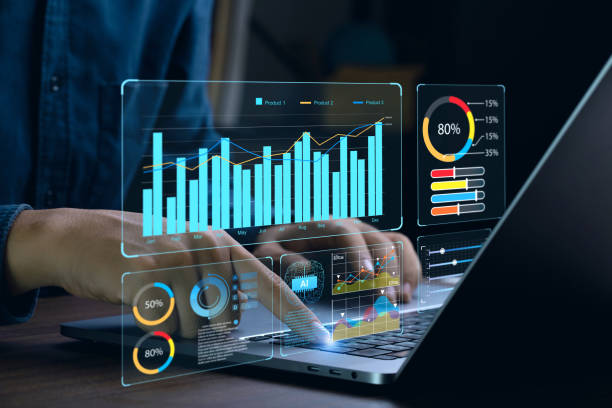WordPress is a powerful platform that can be used to create nearly any type of website. However, it takes time and practice to master the program.
A well-designed website goes beyond aesthetics to encompass usability and functionality. WordPress designers are skilled at balancing these factors to produce sites that both meet design expectations and achieve business goals.

1. Create Compelling Content
Web deisgn expert employs a diverse set of design and technical skills to craft captivating websites that align with clients’ online objectives. They prioritize user experience, seamlessly integrating UI elements to enhance functionality and engage visitors effectively
Readability is one of the most important web design principles. Use readable fonts to attract site visitors and encourage them to stay longer on your website. Make sure that your headlines are attention-grabbing and include emotional triggers to compel your readers to take action.
Additionally, a good wordpress web design Melbourne should be easy to navigate. If a website is too difficult to navigate, visitors will get frustrated and leave.
2. Use a Hybrid Approach
While it is a common misconception that visual design alone makes for a great website, web designers should remember that usability and functionality are equally important. These key principles will help them craft websites that leave an indelible mark on their audience.
Visitors should never feel lost or confused while navigating your website. In fact, 37% of users claim that bad navigation causes them to leave a website.
To avoid this, you must create an intuitive layout with clear, consistent links and navigation systems that make the site easy to navigate. This is possible using a comprehensive toolkit like Thrive Suite, which provides the all-in-one plugin tools you need to build a website that engages and converts your visitors.

3. Prioritize Simplicity and Minimalism
A minimalist aesthetic in WordPress web design creates a clean and elegant site that prioritizes clarity and functionality. This approach is especially effective in capturing attention when users are online.
Minimalism involves using fewer elements and a simpler layout, which can help sites load faster. This can be particularly important for mobile users who may have slower internet connections.
Minimalism also encourages the use of strategic white space to add visual breathing room and improve readability. It also involves utilizing the right amount of images and other media, while ensuring that they are appropriate to the message. Finally, minimalism incorporates user feedback and a data-driven approach to ensure continuous optimization of the website.
4. Ensure Responsiveness
Ensure that your WordPress website is responsive by following best practices and optimizing for mobile. This includes using tools and plugins to compress images and ensure a fast loading speed. This can significantly improve user experience and keep visitors on your site longer.
This is especially important since a significant portion of internet traffic now comes from mobile devices. Responsive websites offer a smooth, seamless browsing experience for visitors regardless of screen size. This helps increase engagement and ultimately, conversions. In addition, it can also positively impact SEO rankings and search engine optimization.
5. Utilize Visual Hierarchy
Visual hierarchy is the arrangement of design elements in a way that implies relative importance. It’s the foundation of effective website design and plays a critical role in user engagement, navigability, and conversions.
A well-planned visual hierarchy makes it easy for users to scan a web page and find the information they’re looking for. It involves the use of color, size, and layout to create a clear structure and organize the content.
It’s also important to remember that not all elements should stand out. If you make too many elements look equally important, your website will become cluttered and overwhelming. Make sure to test your visual hierarchy to ensure that it works effectively.
6. Create Intuitive Navigation Menus
A website’s navigation menu plays a vital role in shaping the overall user experience. It guides visitors seamlessly through the site’s content, ensuring they are able to find what they’re looking for. A functional and visually appealing menu improves usability, increasing time spent on site, page views, and on-site sales.
A well-designed navigation menu also aligns with the website’s overall branding, creating a consistent and professional user experience. In addition, it caters to users with visual impairments by incorporating clear and concise labeling and responsive layouts that adapt to various screen sizes. Moreover, the menu should minimize the use of dropdown lists. Instead, mega menus offer more visual instruments to break up lists and organize them logically.
7. Utilize ‘No Code’ Platforms
Previously, customizing a website involved coding, which took time and required a skilled developer. But now, ‘no code’ platforms have become an integral part of the WordPress ecosystem.
These tools allow users to create a website that is responsive and visually appealing without having to learn how to code. Some of these include Duplicator, a website management tool that simplifies site migration and allows for easy backups.
Another useful no-code tool is AIOSEO, which simplifies SEO and helps improve website ranking. It also provides tools for tracking user behavior and conversions. This is an important aspect of any business website. Thrive Suite is another great no-code platform that offers a variety of hassle-free solutions for content building, lead generation, and analytics.
8. Be Consistent
Whether you already have an existing website or are starting from scratch, creating the right experience for visitors to your site is crucial. People make snap assumptions about your brand in 50 milliseconds or less, and a smooth, intuitive discovery process builds trust and encourages return visits.
Web design encompasses a wide range of factors, from color and typography to layout and interaction. A lack of consistency creates a disjointed user experience, and can even result in frustrating glitches that reduce overall usability. By embracing consistency in WordPress web design, you can create an irresistible online presence. This translates to increased conversions, and ultimately to more business. The best way to do this is through a well-thought-out design process.









 We live in a quick paced world. Time is moving quick and in spite of the comfort that innovation give, many people are not any more ready to discover time to clean their homes and organizations.
We live in a quick paced world. Time is moving quick and in spite of the comfort that innovation give, many people are not any more ready to discover time to clean their homes and organizations.